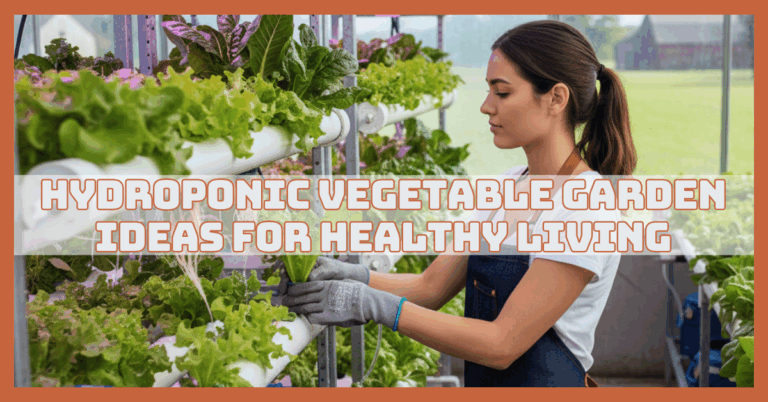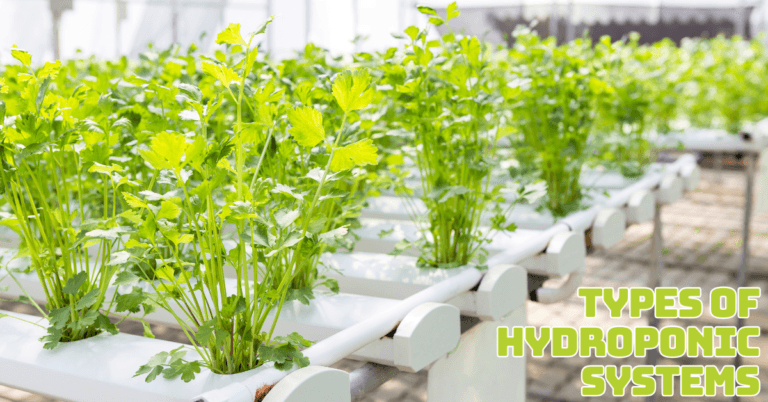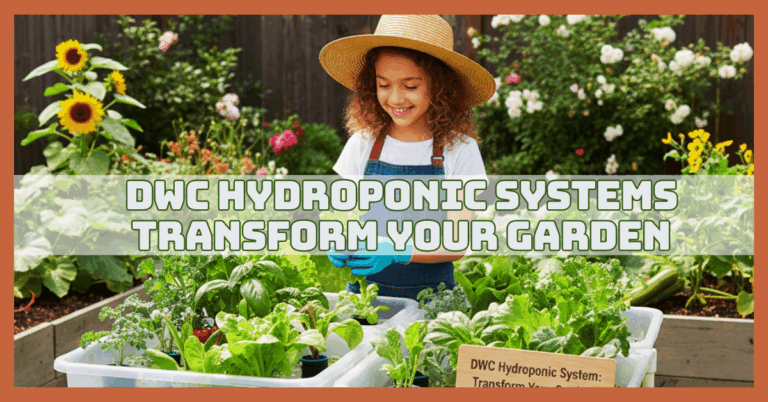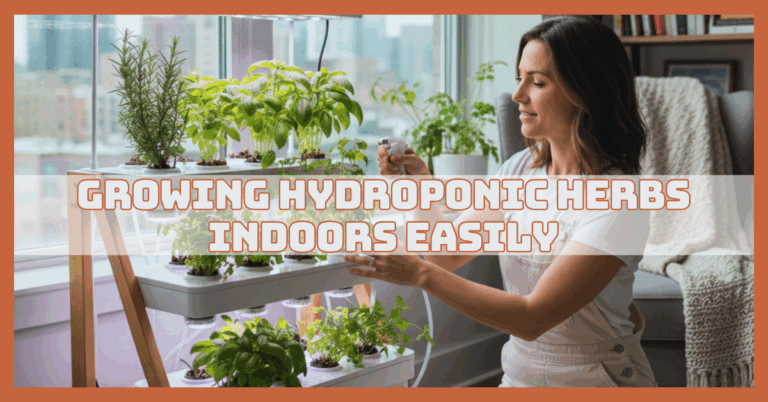Aeroponics vs Hydroponics
Aeroponics vs Hydroponics: Which Soilless Farming Method Reigns Supreme?
Aeroponics and hydroponics are innovative, soil-free growing methods transforming modern agriculture. While both systems optimize water and nutrient use, they differ in technique and efficiency.
Aeroponics uses nutrient mist, maximizing oxygen exposure, while hydroponics relies on nutrient-rich water solutions.
This article compares aeroponics vs hydroponics, highlighting their fundamental differences, benefits, and suitability for various crops to help you choose the proper method for your needs.

What Are Aeroponics And Hydroponics?
What Is Aeroponics?
Aeroponics is an advanced soilless growing system in which plants are suspended in air, and their roots are misted with a nutrient-rich solution. This method ensures maximum oxygen exposure, significantly accelerating growth rates and enhancing plant health.
The fine mist allows for efficient nutrient uptake, promoting rapid development compared to soil-based or other hydroponic systems.
Initially developed by NASA to grow food in space, aeroponics is now widely used in urban farming for its water efficiency and high-yield potential, making it an innovative solution for sustainable agriculture.
What Is Hydroponics?
Hydroponics is a versatile soilless farming technique where plant roots grow in a nutrient-rich water solution instead of soil.
This method includes various setups, such as Deep Water Culture (DWC), Nutrient Film Technique (NFT), and Ebb and Flow systems, to cater to different plant needs.
Hydroponics optimizes water and nutrient use, supporting faster growth and higher yields. It is particularly effective for crops like lettuce, herbs, and tomatoes.
The regulated atmosphere decreases the risk of pests and illnesses, making hydroponics the favoured method for indoor gardening and commercial agriculture.

The Similarities Between Aeroponics And Hydroponics
1. Soilless Cultivation
Aeroponics and hydroponics do not require soil, making them ideal for regions with poor or unavailable soil quality. These systems allow cultivation in unconventional spaces like rooftops or urban areas, promoting food production in challenging environments while offering precise control over nutrient delivery and plant growth.
2. Controlled Environment
Both systems rely on controlled settings, such as greenhouses or indoor farms, where temperature, humidity, and lighting can be optimized.
This ensures year-round cultivation regardless of weather, providing consistent yields and allowing growers to tailor the environment to the specific needs of their crops.
3. Water Efficiency
Aeroponics and hydroponics use up to 90% less water than traditional agriculture by recirculating nutrient solutions. This makes them highly sustainable, especially in water-scarce regions, and supports conservation efforts while maintaining high productivity and growth efficiency for various crops.
4. Higher Crop Yields
Aeroponics and hydroponics enhance crop productivity by delivering nutrients directly to plants in an optimized, controlled environment.
This method ensures plants expend less energy on root expansion and more on growth. Studies indicate yields are often 30-50% higher than soil farming, with faster growth cycles and healthier produce quality.
5. Reduced Pest Issues
The absence of soil significantly reduces pests and soil-borne diseases, minimizing the reliance on chemical pesticides. This creates a cleaner, healthier growing environment, leading to safer produce and reduced environmental impact while simplifying pest management practices for growers.

Advantages And Disadvantages Of Aeroponics
Advantages Of Aeroponics
1. Maximum Oxygenation
In the debate of aeroponics vs. hydroponics, aeroponics offers maximum oxygenation by suspending roots in the air. This leads to faster growth and healthier plants than water-based hydroponics.
This enhances nutrient uptake and accelerates plant growth, promoting healthier plants with more robust root systems than traditional methods.
2. Water Efficiency
Aeroponics, which recirculates fertilizer solutions, consumes up to 90% less water than soil farming. This makes it highly sustainable and ideal for regions with limited water resources or where conservation is a priority.
3. Space Saving
Vertical setups are a hallmark of aeroponics, enabling efficient use of limited space. This makes it especially suitable for urban farming, where maximizing productivity in small areas is crucial.
4. Rapid Growth
The system's ability to provide optimal oxygen and nutrient levels directly to the roots results in faster plant growth, often doubling the speed compared to conventional farming methods, boosting productivity.
5. Less Environmental Impact
Since aeroponics uses very little water and avoids soil degradation, it has a lower environmental impact than traditional farming. It's particularly beneficial in areas with limited water resources or degraded land.
6. High Nutrient Absorption
The misting system ensures plant roots receive consistent, direct access to nutrients. This results in efficient nutrient uptake and enhanced plant growth compared to other transportation methods through soil or water.
7. Reduced Need for Fertilizers
Aeroponics decreases the risk of overfertilization by precisely delivering nutrients to plant roots. This minimizes nutrient waste, leading to more sustainable farming practices with lower fertilizer usage.
8. Minimal Root Rot Risk
In comparing aeroponics vs hydroponics, aeroponics reduces the risk of root rot by keeping roots exposed to air and mist, leading to healthier plants and less maintenance. This promotes healthier plants and reduces maintenance.
Disadvantages Of Aeroponics
Aeroponics uses air or mist to deliver nutrients to plant roots, offering efficient solutions for urban farming, space exploration, disaster relief, and environmental restoration.
1. High Initial Cost
The advanced equipment required for aeroponics, such as misting systems and timers, makes it an expensive investment, which may deter smaller growers or hobbyists from adopting the method.
2. System Dependence
Aeroponics heavily relies on the misting system. Any malfunction, such as pump failure, can deprive roots of nutrients and water, potentially causing significant plant damage within hours.
3. Complex Maintenance
Aeroponics requires regular monitoring and skilled maintenance to prevent issues like clogs in the misting nozzles. Frequent cleaning and precise adjustments add to the system's complexity and upkeep demands.
4. Vulnerability To Power Outages
Aeroponic systems rely heavily on electricity to power misting systems, pumps, and air circulators. A power failure, even for a short period, can lead to rapid plant damage or death due to a lack of nutrient delivery and oxygen.
5. Technical Expertise Required
Due to its complexity, aeroponics demands higher technical knowledge and skill. Operators must monitor and adjust the misting intervals, nutrient levels, and environmental conditions, making it less suitable for beginners or hobbyists.
6. Limited Plant Variety
While aeroponics is great for fast-growing, smaller plants like leafy greens and herbs may offer better options for larger, more established crops. Some plants may need help with the limited root support or misting system.
7. Susceptibility To System Failures
Aeroponics is highly dependent on system components like misting nozzles and nutrient pumps. Failure in these systems can result in quick crop loss, making them more sensitive than hydroponics.
8. Water And Nutrient Loss In Case Of System Failure
While aeroponics uses less water than other systems, a system failure can lead to rapid water and nutrient loss, as the roots rely on mist. Unlike hydroponics, where water can be recirculated, aeroponics requires immediate intervention.

Advantages And Disadvantages Of Hydroponics
Below, we explore hydroponics's key benefits and disadvantages to provide a comprehensive view of this farming technique.
Advantages Of Hydroponics
Hydroponics offers efficient, soil-free farming with benefits like scalability, faster growth, pest control, and year-round cultivation.
1. Scalability
Hydroponics systems are versatile, catering to small-scale DIY enthusiasts and large commercial operations. Their adaptability makes them ideal for growers at various levels, from hobbyists to professional agricultural enterprises.
2. Lower Maintenance
Compared to aeroponics, hydroponic systems are easier to manage and have fewer components that can fail. This reliability reduces the time and expertise required, making them accessible to a broader range of users.
3. Diverse Plant Options
Hydroponics supports various crops, from leafy greens and herbs to fruits and vegetables. This flexibility allows growers to efficiently cultivate multiple plant types in the same system.
4. Cost-Effective
Hydroponics is generally more cost-effective than aeroponics and requires a lower initial investment. This makes it a more accessible option for beginners or those with budget constraints.
5. Longer Growing Seasons
Hydroponics supports year-round farming by controlling temperature, humidity, and light. This creates optimal conditions for consistent harvests, free from seasonal and weather constraints.
6. Fewer Pest Problems
In hydroponics, soil absence means fewer pests like aphids, root rot, and soil-borne diseases. With no soil to harbour insects, the need for pesticides is minimized, creating a healthier, cleaner growing environment and reducing potential crop damage from pests.
7. Easier Automation
Hydroponic systems, particularly in commercial setups, can be automated to regulate water, nutrients, pH, and lighting. Automation enhances efficiency, reduces labour, and ensures consistency in plant care, making large-scale operations more straightforward to manage while optimizing resource use and improving yields.
8. Rapid Plant Growth
Hydroponic systems directly deliver nutrients, water, and oxygen to the plant roots, ensuring faster and more efficient uptake.
This promotes healthier root development and quicker growth, resulting in plants maturing 30-50% faster than soil-grown ones. This leads to increased productivity and more frequent harvests.
Disadvantages Of Hydroponics
While hydroponics offers numerous benefits, it also presents several challenges. These include high water usage, maintenance requirements, energy costs, and dependency on external resources, which can limit its efficiency and sustainability.
1. Water Usage
In the debate of aeroponics vs hydroponics, hydroponics uses more water than aeroponics, making it less efficient in regions where water conservation is crucial.
2. Root Diseases
If not correctly aerated or monitored, stagnant water in hydroponic systems can create conditions favourable for root diseases, leading to potential crop loss and the need for preventive measures.
3. Bulky Systems
Some hydroponic setups, like ebb and flow or DWC, require larger tanks and equipment, making them less space-efficient than aeroponics, particularly for urban or vertical farming initiatives.
4. Clogging And Maintenance
Hydroponic systems, especially drip systems, can suffer from clogged emitters or pipes due to nutrient build-up or algae growth. These require frequent cleaning and maintenance to ensure smooth operation, which can be time-consuming.
5. Risk Of Disease Spread
While hydroponics minimizes soil-borne infections, it also increases the danger of disease transmission through polluted water or poor sanitation. A pathogen in one part of the system can quickly spread to other plants.
6. Dependency On External Inputs
Hydroponic farming heavily depends on external supplies like nutrient solutions and artificial lighting. Any disturbances in the supply chain could result in crop failures or higher costs, making the system less resilient to external forces.
7. Environmental Control Costs
When comparing aeroponics vs hydroponics, maintaining a controlled environment for hydroponics can be expensive and require constant monitoring, adding complexity and cost to the system. This adds complexity and cost, especially in regions where climate control is essential for optimal growth.
8. Energy Consumption
Hydroponic systems can consume substantial electricity, particularly those using artificial grow lights or pumps. This energy cost can increase over time, making it more expensive than traditional farming in some regions.

Applications Of Aeroponics And Hydroponics
Both aeroponics and hydroponics offer innovative solutions for efficient, soil-free farming with diverse applications. From urban farming and space exploration to commercial agriculture and educational programs, these methods contribute to sustainability and food security in various settings.
Applications Of Aeroponics
Aeroponics uses air or mist to deliver nutrients to plant roots, offering efficient solutions for urban farming, space exploration, disaster relief, and environmental restoration.
1. Urban Farming
Due to its vertical scalability, aeroponics is perfect for urban areas with limited space. Compact systems allow high-density food production in cities, contributing to sustainable urban agriculture and reducing food transportation needs.
2. Research And Innovation
Aeroponics is extensively used in research labs to study plant growth in precisely controlled environments. It provides insights into optimizing nutrient delivery and plant health, contributing to advancements in agricultural technologies.
3. Space Exploration
NASA's experiments with aeroponics demonstrate its potential for growing food in space. Its efficiency and minimal resource use make it ideal for future space missions, supporting sustainable food production in extraterrestrial environments.
4. Phytoremediation Projects
Aeroponics vs. hydroponics in environmental restoration efforts shows that aeroponics is particularly useful for growing plants in phytoremediation projects, as it allows for easier maintenance and harvesting to remove contaminants from the soil or water.
Plants grown aeroponically can be more easily maintained and harvested in phytoremediation projects, where they absorb and filter pollutants.
5. High-Efficiency Food Production In Remote Areas
Aeroponics is ideal for growing food in remote locations with scarce resources, such as deserts or islands. Its low water requirement and ability to grow crops in compact, controlled environments make it a sustainable solution for food production in challenging areas.
6. Hydroponic-Aeroponic Hybrid Systems
Some agricultural setups combine aeroponics with hydroponics to optimize plant growth. In these hybrid systems, aeroponics is used for seedlings or the initial stages of plant growth, while hydroponics supports later stages, providing a highly efficient method for large-scale production.
7. Growing Specialty Crops
Aeroponics excels at high-value, specialty crops like medicinal plants, herbs, and microgreens compared to hydroponics due to its precise nutrient delivery and fast growth in controlled environments.
The system’s precision in nutrient delivery and ability to grow plants quickly in a controlled environment makes it perfect for these crops, which often require specific growing conditions.
8. Food Production For Disaster Relief
Aeroponics can provide a rapid, sustainable solution for food production in disaster-stricken areas where soil is contaminated or unavailable.
The system can be set up quickly and provide a consistent food source in environments where traditional farming is not feasible.
Applications Of Hydroponics
Aeroponics uses air or mist to deliver nutrients to plant roots, offering efficient solutions for urban farming, space exploration, disaster relief, and environmental restoration.
1. Commercial Farming
Hydroponics is commonly used in commercial farming to grow lettuce, tomatoes, and cucumbers. Its ability to produce consistent, high-yield harvests makes it a reliable choice for large-scale agriculture.
2. Home Gardening
Hydroponics systems like Kratky and DWC are beginner-friendly, allowing hobbyists to grow fresh produce at home. These systems are easy to set up and maintain, making soilless gardening accessible to everyone.
3. Desert Agriculture
Hydroponics is ideal for arid regions with limited water availability. Its water-efficient methods enable cultivation in desert climates, transforming barren lands into productive agricultural hubs and enhancing food security.
4. Cultural And Culinary Applications
Hydroponics is gaining popularity in specialty food production, including growing herbs, microgreens, and exotic crops. These systems can grow hard-to-find or high-demand items for gourmet kitchens, restaurants, and culinary markets.
5. Pharmaceutical And Medicinal Crops
Hydroponics is used to grow medicinal plants in controlled conditions. Plants with specific chemical properties, such as cannabis, are cultivated using hydroponics to ensure precise nutrient control, maximizing yields of active compounds for medical applications.
6. Tourism And Hospitality
In the context of aeroponics vs hydroponics, some luxury resorts and hotels have adopted hydroponics to grow fresh produce on-site, enhancing sustainability and reducing the environmental footprint of food sourcing.
These systems grow fresh produce on-site for guests, providing a unique experience while reducing the ecological footprint associated with food sourcing.
7. Educational Centers And Public Outreach
Hydroponics is an excellent educational tool in schools, universities, and community outreach programs. Its efficiency and innovation make it an engaging way to teach students about modern agricultural technologies and sustainability.
Choosing Between Aeroponics And Hydroponics
When deciding between aeroponics and hydroponics, consider the following factors:
1. Budget
Hydroponics is cost-effective and ideal for beginners, with simple systems requiring minimal investment. Aeroponics, however, demands a higher initial cost due to advanced equipment like misting systems and environmental controls.
2. Plant Types
Hydroponics supports a diverse range of plants, from herbs to fruits. Aeroponics excels with fast-growing crops like leafy greens but is less suitable for more extensive, heavy-yield plants.
3. Space Availability
Aeroponics' vertical scalability makes it perfect for areas with limited space, like urban farms or indoor setups. Hydroponics, while flexible, often requires more horizontal space for larger systems.
4. Expertise
Hydroponics systems are straightforward and beginner-friendly, requiring minimal maintenance. Aeroponics, however, involves complex technology and consistent monitoring, demanding more technical skill and experience.
5. Water Availability
Aeroponics uses minimal water, making it the better option for regions with scarce water resources. Hydroponics, while water-efficient, uses more water than aeroponics for nutrient delivery.
FAQ
1. Which System Is More Water-Efficient?
Answer: Aeroponics is more water-efficient than hydroponics, using up to 90% less water due to the misting system than hydroponics' water reservoirs.
2. Which System Is Better For Beginners?
Answer: Hydroponics is generally more manageable for beginners, as it’s less complex and requires less maintenance than aeroponics, which requires more technical knowledge and regular monitoring.
3. Is Aeroponics More Expensive Than Hydroponics?
Answer: Yes, aeroponics generally requires a higher initial investment due to the specialized equipment needed for misting systems, while hydroponics has more affordable options, especially for smaller setups.
4. Which System Is Better For Growing Herbs?
Answer: Both aeroponics and hydroponics are suitable for growing herbs, but aeroponics can provide faster growth and higher yields due to increased oxygenation and efficient nutrient delivery.
5. Can Aeroponics And Hydroponics Be Used For Commercial Farming?
Answer: Yes, both systems are scalable for commercial farming, with hydroponics being widely used for large-scale operations and aeroponics offering a more space-efficient solution with superior growth potential for specialty crops.
6. How Do Aeroponics And Hydroponics Affect Plant Growth?
Answer: Both systems accelerate plant growth compared to soil farming, but aeroponics provides faster growth rates by maximizing oxygen exposure, while hydroponics ensures consistent nutrient access through water.
7. Do Aeroponics And Hydroponics Require A Lot Of Space?
Answer: Aeroponics can be more space-efficient with vertical setups, while hydroponics may require more space for larger systems, particularly in commercial farming operations.
8. Are There Any Environmental Benefits To Using Aeroponics Or Hydroponics?
Both systems use less water than traditional farming and reduce the need for pesticides, making them more environmentally friendly. Aeroponics uses even less water, while hydroponics generates nutrient-rich wastewater.
Conclusion
Both systems offer sustainable food production solutions in the aeroponics vs. hydroponics debate. Hydroponics is more versatile and accessible, while aeroponics provides greater efficiency at a higher cost. Your decision is based on your objectives, budget, and expertise.
With continuous advancements, both systems are crucial in addressing food security and promoting sustainable farming. Which will you choose for your farming journey? Share in the comments!
I trust you enjoyed this article on Aeroponics vs Hydroponics: Which Soilless Farming Method Reigns Supreme? Stay tuned for more blog posts soon. Take care!
JeannetteZ
>>>Please click here to read my all-inclusive article, About The Essential Companion Planting Guide<<<
>>>Please click here to read my all-inclusive article about Container Gardening<<<
>>>Are you interested in homegrown herbs and medicine? Please click here to find out more about it!<<<
Your Opinion Is Important To Me
Do you have thoughts, ideas, or questions? I would love to hear from you. Please leave me your questions, experiences, and remarks about this article, Aeroponics vs Hydroponics: Which Soilless Farming Method Reigns Supreme? in the comments section below. You can also email me at Jeannette@Close-To-Nature.org.
Disclosure
This post may contain affiliate links. As an Amazon Associate and other affiliate programs, I earn from qualifying purchases at no extra cost to you. Please read my full affiliate disclosure.
You might also enjoy these blog posts:
How To Build A DIY Hydroponic System
The Ultimate Guide To Companion Flowers For Vegetables
Top 10 Companion Plants For Tomatoes
The Best Plants For Hydroponics And How To Grow Them
10 Winning Herb And Vegetable Companion Planting Combinations







